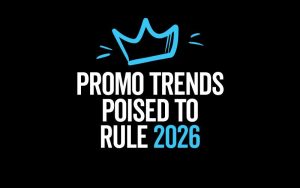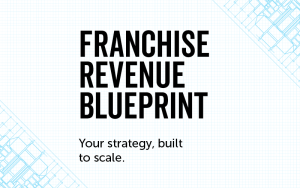Highlights:
- Use campaign-specific CTAs, promo codes, and phone numbers to track results.
- Surveys and coupon redemptions help attribute offline action to print materials.
- Website traffic spikes from print prompts can signal ROI success.
[Revamped for 2025]
There’s a good reason print is still a critical component of marketing campaigns. Actually—there are quite a few. Studies show that print ads convert more sales, are more trustworthy, and are more memorable than digital ads. And they happen to also be relatively affordable, fast, and easy to track.
People love the feeling of print in their hands. And while screens have become a steady presence in our lives, nothing quite compares to the tactile experience of a magazine, flyer, direct mail piece, or other print product—a piece you can return to again and again.
Businesses continue to see big wins with print campaigns. Restaurants often send out direct mail coupons to increase traffic, car dealerships pull people in for service specials and new cars with postcards, and health professionals send letters and direct mail with new customer calls to action. It’s because they work!
Related: Is Print Still Dead? Research Says No.
Watch the Lift in Web Analytics
But when you use print, it’s not only print where you’ll see the results. One of prints’ superpowers is to increase website traffic too. Track your website analytics during a print campaign to see the direct lift from the added exposure. It’s real.
We know print is effective. But how effective, you ask? How can you track print marketing by measuring the key performance indicators (KPIs) specific to a print campaign—and generate a print marketing ROI?
Let’s break it down!
Tracking Print Advertising KPIs
Here are eight easy ways to track print advertising KPIs.
- Start with a Strong Call to Action: A call to action (CTA) is the most important thing to consider when you’re creating a print campaign designed to increase traffic, drive leads, and ultimately boost your sales. It’s so important that the call to action is just as critical as the delivery vehicle itself. Whether you tell consumers to call, stop in, or go online for a discount, free product or service, or another enticement, this small step will ensure you attract customers with an offer they can’t refuse (ahem, a way you can track print marketing).
- Use a Coupon Code or Offer: Once you’ve called them to action you’ll need to include a code people can use to unlock their deal and track your print marketing. Keep it simple and memorable—and make it unique. You might provide a discounted price for the code “Fall4Fall.” Often retailers offer loss leaders to bring customers in the door; restaurants provide coupons to entice business, and service industries provide discount codes. Be strategic—you can build in location-based information to identify specific sources of business as well, such as a trade show or other event where the print product was distributed.
- Include a Special Phone Number: Create a phone number dedicated to a specific campaign so you can track all calls for that number. To set one up, you can use this guide.
- Just Ask: Many times the best way to track the success of a print campaign is to ask customers directly how they heard about your business. You can do this over the phone, in person, online, via email, or through social. A nice survey is also a great sendoff. People are usually happy to tell you how they found your business, and you can get an idea of how your print campaign is drawing people in.
- Put a QR on It: Quick response (QR) codes are a fast track to a website, no URL typing needed. If this landing page can only be accessed by scanning the QR code, you have an accurate way to measure the effectiveness of your print material with the QR code.
- Show a Digital Landing Page URL: This is one of the most robust ways to collect data from a print campaign since you can have a form on the landing page that gathers whatever information you need, including name, number, email, and more. If you have “gated” content that people unlock once you receive their info, you can gift them a discount or other enticement and get a qualified lead in return. Additionally, any online conversions are simple to track through online analytics.
- Build a Personalized Landing Page: Go one step further than a general landing page with a personalized landing page, or PURL. Personalization changes the game, with higher response rates and stronger brand loyalty. Whether you use your prospect’s name, favorite products, birthday, age, or another demographic or psychographic variable to determine which offer to serve up, it’s great for customer and business alike—since it gets to the heart of the customer’s needs. Personalization rockets ROI.
Related: How Personalized Print Products Bolster Your Marketing Efforts. - Close the Circle with Your CRM Database: With data-driven direct mail, you know exactly who you targeted because they were included right there in the mailing list. During post-campaign analysis, take data from your CRM and match it back to your audience file; go ahead and add them up. You know that everyone in your audience file received the direct mail piece, so who took the action? Let the data tell the story and see how well your strategy worked!
Now to the Fun Part! Calculating Print Marketing ROI
Ready for results? Once you’ve set up the ROI trackers above, you can plug their results into this general return on spend formula (note: there are many ways to handle print marketing ROI, and this is one of the most basic):
Revenue / Total Investment * 100 = Return on Spend
So, if you run a print campaign costing $50,000 for a specific product over a period of three months and you see a $100,000 increase in sales revenue, your return on spend would be:
100,000 / 50,000 = 2
2 x 100 = 200%
That’s a helpful benchmark, but it doesn’t tell the whole story. More advanced marketers often take this a step further by looking at incremental ROI. For example, setting aside a small “control group” that doesn’t receive the campaign allows you to see the true lift your print piece delivered beyond what should have happened anyways. Even a simple control/test split can give you a clearer more accurate view of impact.
Of course, ROI will vary depending on the strength of your offer, how many times you send out the print piece, and how good your mailing list is. But with a well-crafted CTA, a refined audience, and consistent follow-through you’ll be well positioned to see a positive print marketing ROI.
Related: Print Advertising: A Multifaceted Approach for a Multiplied Impact.
Get a Great Print Marketing ROI
See how far the power of print can take your business. Multi-location and franchise businesses can maximize their investment across locations by putting print and digital together for even greater engagement. Ironmark can help you simplify your marketing success through our data-driven approach, providing smart marketing strategies for both digital and print (phygital) power.
Let’s ramp up your ROI!



